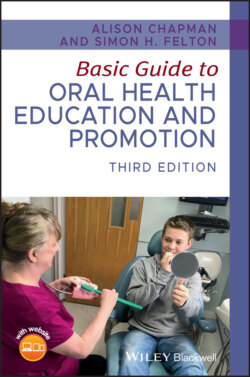Читать книгу Basic Guide to Oral Health Education and Promotion - Alison Chapman - Страница 66
PLAQUE
ОглавлениеMost people have heard of plaque, but few would be able to explain its composition.
Plaque is a soft, non‐calcified adherent film that collects on the surfaces of teeth, and comprises approximately:
70% microorganisms (bacteria, fungi, viruses).
30% matrix (the framework that holds it together).
Plaque is found in all mouths and makes up part of the natural flora of the body. The most common sites where plaque is found are occlusal pits and fissures, cervical margins of the teeth and in periodontal pockets. Patients can be made aware of plaque in their mouths by using a disclosing solution or tablets (Figure 2.1 a,b). (See Chapter 19.)
Plaque is a major causative factor in gingival and periodontal disease and a contributory factor in dental caries. Even in people with good toothbrushing skills, one would need to brush and floss approximately every 3 minutes in order to prevent plaque from forming.
Figure 2.1 (a,b) Plaque undisclosed (a) disclosed (b) in the same mouth.
Source: Alison Chapman.
Figure 2.2 Mature plaque and gingivitis in a neglected mouth.
Source: Alison Chapman.
In a healthy mouth, there is a natural balance of bacteria, but when illness or antibiotics (for example) upset the balance of the mouth’s flora, or when teeth are not cleaned often and/or appropriately, plaque matures. Waste products from the bacteria, enzymes and toxins then cause an inflammatory response in the gingival tissues leading to gingivitis (Figure 2.2). Depending on an individual’s response, gingivitis can progress to periodontal disease.
